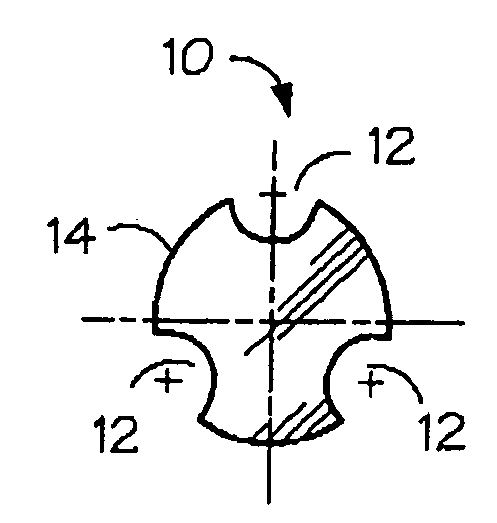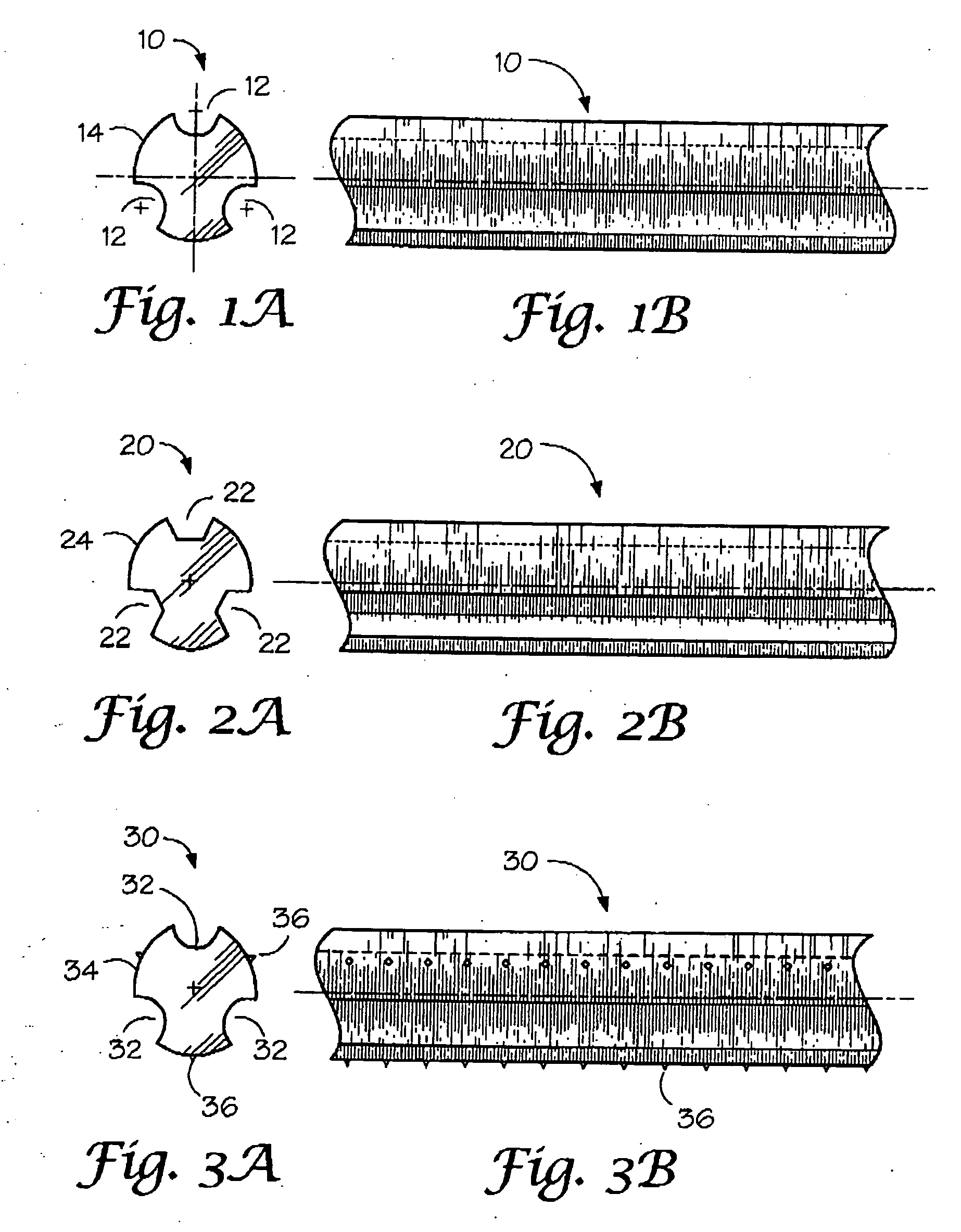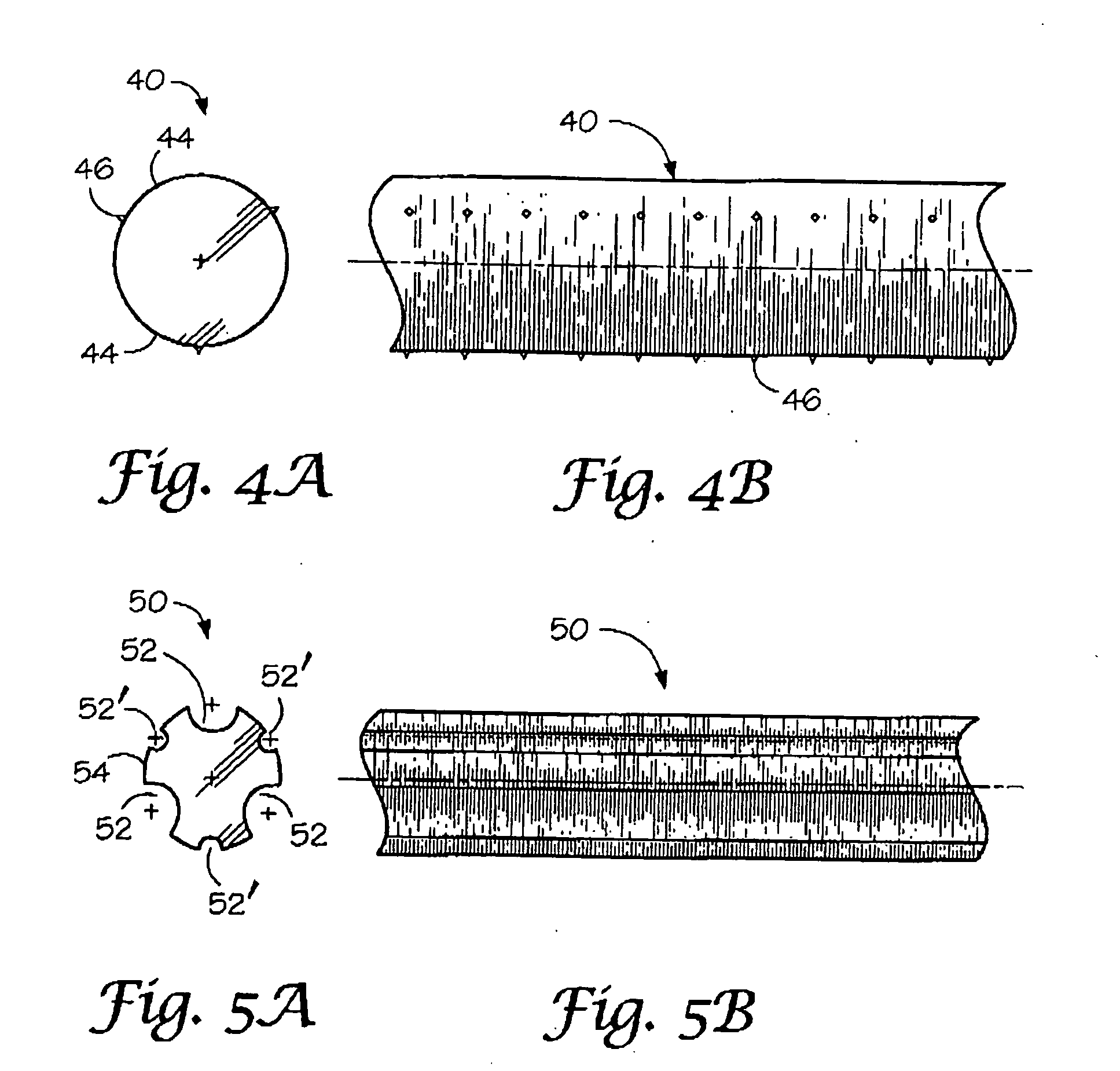Absorbable / biodegradable tubular stent and methods of making the same
a tubular stent, biodegradable technology, applied in the direction of prosthesis, antibacterial agents, blood vessels, etc., can solve the problems of increasing the risk of rupture, stent migration, stenosis, thrombosis, and other adverse medical effects, so as to prevent restenosis and infection.
- Summary
- Abstract
- Description
- Claims
- Application Information
AI Technical Summary
Benefits of technology
Problems solved by technology
Method used
Image
Examples
example 1
Synthesis and Characterization of Polyaxial Glycolide / ε-Caprolactone Segmented / Block Copolymers Exhibiting Two Extreme Melting Temperatures—General Method
[0062]The synthesis entails two steps. In the first step, a polyaxial polycaprolactone was prepared using trimethylolpropane as the initiator, at a monomer / initiator ratio of 500:1 to 700:1, depending on the sought molecular weight of the final polymer, in the presence of stannous octanoate as a catalyst, at a monomer / catalyst molar ratio of 20,000:1 to 30,000:1, depending on the final copolymer composition. Polymerization was conducted in a mechanically stirred, stainless steel reactor under a dry nitrogen atmosphere at 180° C. for 1.5 to 3 hours or until practically a complete conversion is achieved. This was determined by in-process monitoring of conversion using gel permeation chromatography (GPC). The polymer melt was allowed to cool slightly below 180° C. prior to adding a predetermined amount of glycolide in the second step ...
example 2
Preparation and Characterization of Typical Polyaxial Segmented Copolymer of ε-Caprolactone and Glycolide
[0063]Using the general method described in Example 1, typical copolymers, Co-P1 and Co-P3, were prepared and characterized. Key properties of these copolymers are summarized in Table I.
TABLE IAnalytical Data of Co-P1 to Co-P3 Tested as GroundSpecimens and Their Respective PrepolymersPropertiesCo-P1Co-P2Co-P3Weight Average Molecular Weight of475156Polycaprolactone Prepolymer, kDaCopolymer Composition: Glycolide to60:4060:4060:40Caprolactone Molar RatioCopolymer Inherent Viscosity, dL / g1.71.82InsolubleThermal Properties:Polycaprolactone Polyaxial PrepolymerTm, ° C.585756ΔHf, J / g708994Final Polyaxial CopolymeraTm1, ° C.424141ΔHf1, J / g181819Tm2, ° C.221222221ΔHf2, J / g828077aTm1 and ΔHf1 = Tm and ΔH of polycaprolactone block / segment.Tm2 and ΔHf2 = Tm and ΔH of polyglycolide block / segment.
example 3
Characterization of Thermally and Mechanically Treated Polyaxial Copolymer, Co-P2
[0064]Co-P2 was subjected to thermal and mechanical treatments similar to those expected to be encountered in key typical processes of those associated with stent fabrication and deployment at the desired biological site. Thin polymer films (0.2 mm) were compression molded at about 235° C. under a dry nitrogen atmosphere to provide test specimens for studying the effects of thermal and mechanical treatment (starting with the annealed, ground polymer and unannealed, unoriented films) on melting temperature (Tm) and heat of fusion (ΔHf) of the polycaprolactone and polyglycolide constituent blocks / segments of the polyaxial copolymer.
[0065]The specimens were used to determine changes in Tm and ΔHf as a result of annealing and / or uniaxial orientation in tensile mode. Summary of the experimental data are depicted in Table II. The sets of experiments noted in Table II were designed to determine the effects of ...
PUM
| Property | Measurement | Unit |
|---|---|---|
| temperature | aaaaa | aaaaa |
| temperature | aaaaa | aaaaa |
| Tm | aaaaa | aaaaa |
Abstract
Description
Claims
Application Information
 Login to View More
Login to View More - R&D
- Intellectual Property
- Life Sciences
- Materials
- Tech Scout
- Unparalleled Data Quality
- Higher Quality Content
- 60% Fewer Hallucinations
Browse by: Latest US Patents, China's latest patents, Technical Efficacy Thesaurus, Application Domain, Technology Topic, Popular Technical Reports.
© 2025 PatSnap. All rights reserved.Legal|Privacy policy|Modern Slavery Act Transparency Statement|Sitemap|About US| Contact US: help@patsnap.com



